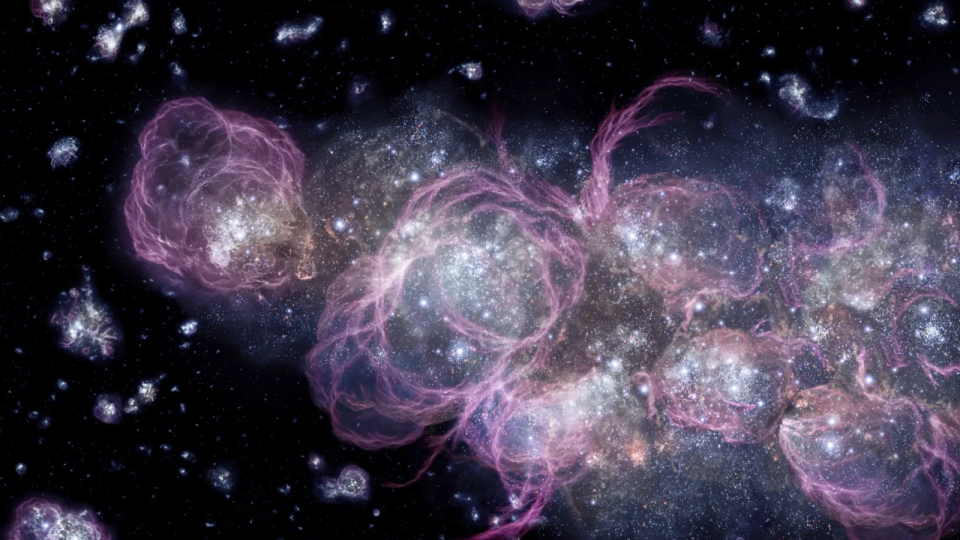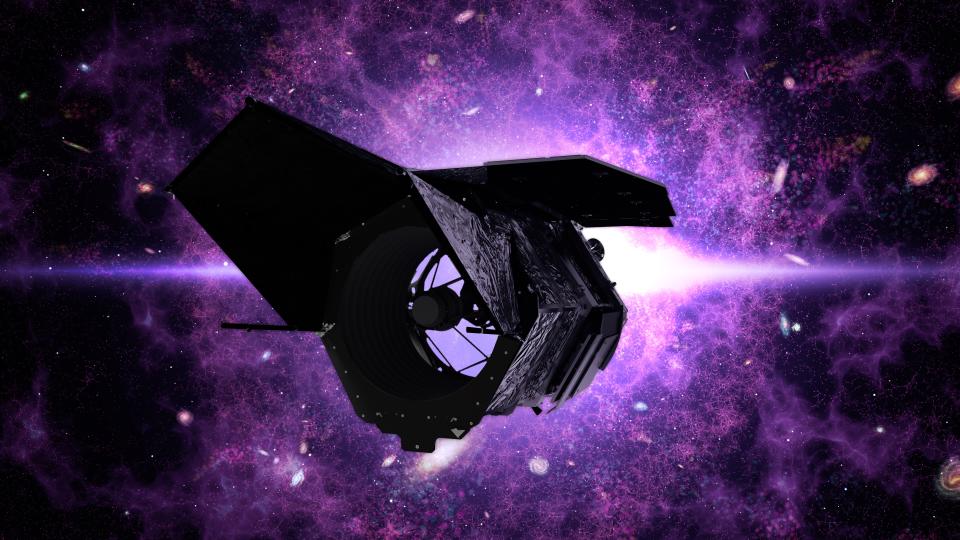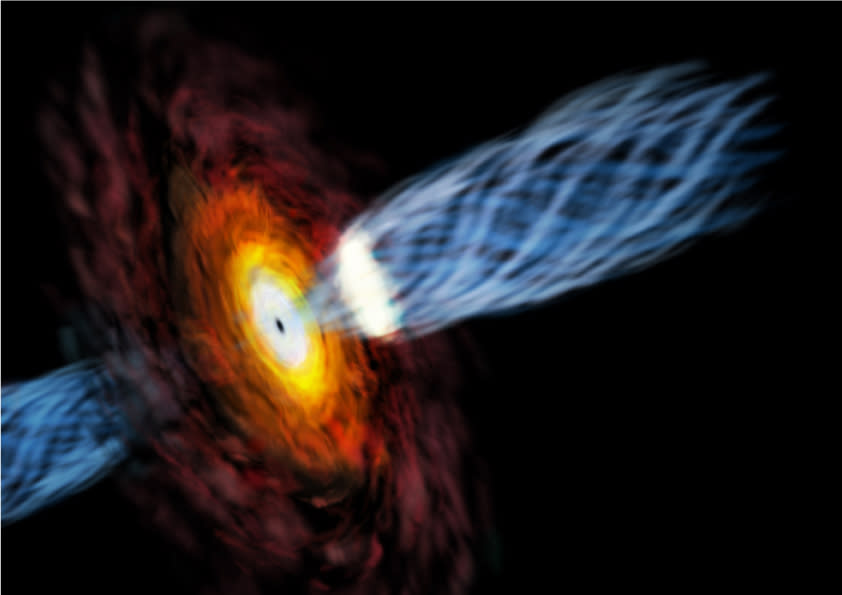When you buy through links in our articles, Future and its syndication partners may earn commission.

When NASA’s next great extraterrestrial observatory, the Nancy Grace Roman Space Telescope, opens its eyes to the cosmos, it will look back to a distant period in the universe’s history called the “cosmic dawn.”
While Roman’s predecessors, the Hubble Space Telescope and the James Webb Space Telescope (JWST), take full advantage of the universe now being transparent to light, the universe wasn’t always this way.
Until about 400,000 years after the Big Bang, the cosmos was opaque, filled with a hazy “fog” of particles that absorbed photons, particles of light. The cosmic dawn, from 50 million to a billion years after the Big Bang, represents the period when this fog began to clear and light began to travel freely.
It is also one of the most important periods in the history of the 13.8 billion-year-old universe, as it coincides with the birth of the first stars, galaxies, and black holes. The Nancy Grace Roman Space Telescope (Roman), scheduled to launch in May 2027, will investigate the influence of these celestial bodies at this critical cosmic turning point.
“Something fundamental about the nature of the universe changed during this period,” said Michelle Thaller, an astrophysicist at NASA Goddard Space Flight Center in Maryland. “Thanks to Roman’s big, sharp infrared view, we can finally figure out what happened at a critical cosmic turning point.”
Relating to: NASA’s Nancy Grace Roman Telescope Will Search for Tiny Black Holes Left Over from the Big Bang
Let there be light!
In its formative years, the universe was filled with a hot, dense sea of particles, including free electrons. These negatively charged particles scattered photons forever, making the universe opaque.
As the cosmos expanded, it also cooled, reaching a point where electrons could bond with protons to form the first neutral atoms and the first elements, hydrogen and helium. This led to the formation of the first stars and galaxies. The removal of free electrons allowed the first light to travel through the universe. We see this light today as a “celestial fossil” called the cosmic microwave background (CMB).
Although the light was no longer scattered infinitely by free electrons at this point, it was still not completely free to travel very far. This was because the photons were quickly colliding with neutral atoms that absorbed them.
This period, which lasted from 380,000 to 200 million years after the Big Bang, was known as the cosmic dark ages. It ended after a period of a few hundred million years when neutral atoms were broken apart or ionized, resulting in the cosmic dawn.
The question is: What caused this ionization of neutral atoms?
“We’re very curious about how this process happens,” says Aaron Yung of the Space Telescope Science Institute in Baltimore, who is part of Roman’s team observing the early universe. “Roman’s wide, clear view of deep space will help us evaluate different explanations.”


Early galaxies themselves are one possible source of radiation that provides energy to ionize early neutral atoms. The environment around the first black holes is another possible source of this high-energy light.
The novel will examine both of these suspects closely.
“Roman will be excellent at finding the building blocks of cosmic structures, such as galaxy clusters, that formed later,” said Takahiro Morishita, an associate scientist at the California Institute of Technology in Pasadena. “It will quickly identify the densest regions where more ‘fog’ clears, making Roman an important mission for investigating early galaxy evolution and the cosmic dawn.”
The stars of the cosmic dawn were different from those in the universe because the density of the early cosmos allowed them to reach masses hundreds or even thousands of times that of the sun. The immense mass of these early stars meant that they had much shorter lifespans than the estimated 10 billion years of the sun, but they also meant that they emitted more intense radiation than modern stars.
Energy from these stars, packed together in dense early galaxies, stripped electrons from protons in the bubbles of space around them.
“You could call it the party at the beginning of the universe,” Thaller said. “We never saw the first stars and galaxies being born, but it must have been amazing!”
Relating to: The first stars in the universe formed earlier than thought
Black holes join cosmic dawn party
These short-lived, massive stars collapsed when their nuclear fuel ran out, giving birth to the first black holes. In the dense environments common in the early universe, these black holes collided and merged again and again.
This has led to the formation of supermassive black holes with millions or billions of times the mass of the sun, but how black holes became so large so quickly is still a pressing cosmic mystery.


Although black holes themselves do not emit light because they are surrounded by a boundary called the “event horizon” from which not even light can escape, these early supermassive black holes may still have contributed to ionization.
When a supermassive black hole is surrounded by the gas and dust it feeds on, this material settles into a rapidly spinning cloud called an accretion disk. The black hole’s immense gravitational pull causes intense tidal forces in the accretion disk, generating friction and heating the gas and dust, causing it to glow brightly in the electromagnetic spectrum.
In addition, the black hole’s magnetic fields can direct matter to its poles, from where it is ejected in twin jets at speeds close to the speed of light. These jets are accompanied by bursts of electromagnetic radiation. Extending hundreds of thousands of light-years across, the supermassive black hole jets are extremely adept at stripping electrons from neutral atoms.
These active supermassive black hole regions, or active galactic nuclei, are known as quasars, and WST is detecting them at distances that correspond to less than a billion years after the Big Bang. The powerful space telescope is finding many more quasars than expected as it probes the cosmic dawn.
Once Roman is up and running, its wider field of view could give us a clearer picture of how common quasars are during the cosmic dawn, potentially finding tens of thousands of sites powered by these supermassive black holes.
“With a stronger statistical sample, astronomers will be able to test a wider variety of theories inspired by JWST observations,” Yung explained.
RELATED STORIES:
— Nancy Grace Roman Space Telescope will ‘rewind’ the universe. Here’s how
— How NASA’s Novel Space Telescope will search for lonely black holes and distant planets
— NASA’s Rome Space Telescope will search for the universe’s first stars — or at least their fragmented corpses
One question the researchers will try to answer with Roman is what types of galaxies are responsible for the ionizing radiation in the cosmic dawn. A key indicator of this will be the size of the ionized bubbles carved out by the radiation.
“It’s possible that young galaxies started the process and then quasars finished it off,” Yung concluded. “Galaxies form large clusters of bubbles around them, while quasars form large globular clusters. In both cases, since they are likely millions of light-years across, we need a large field of view like Roman’s—often larger than JWST’s field of view.”